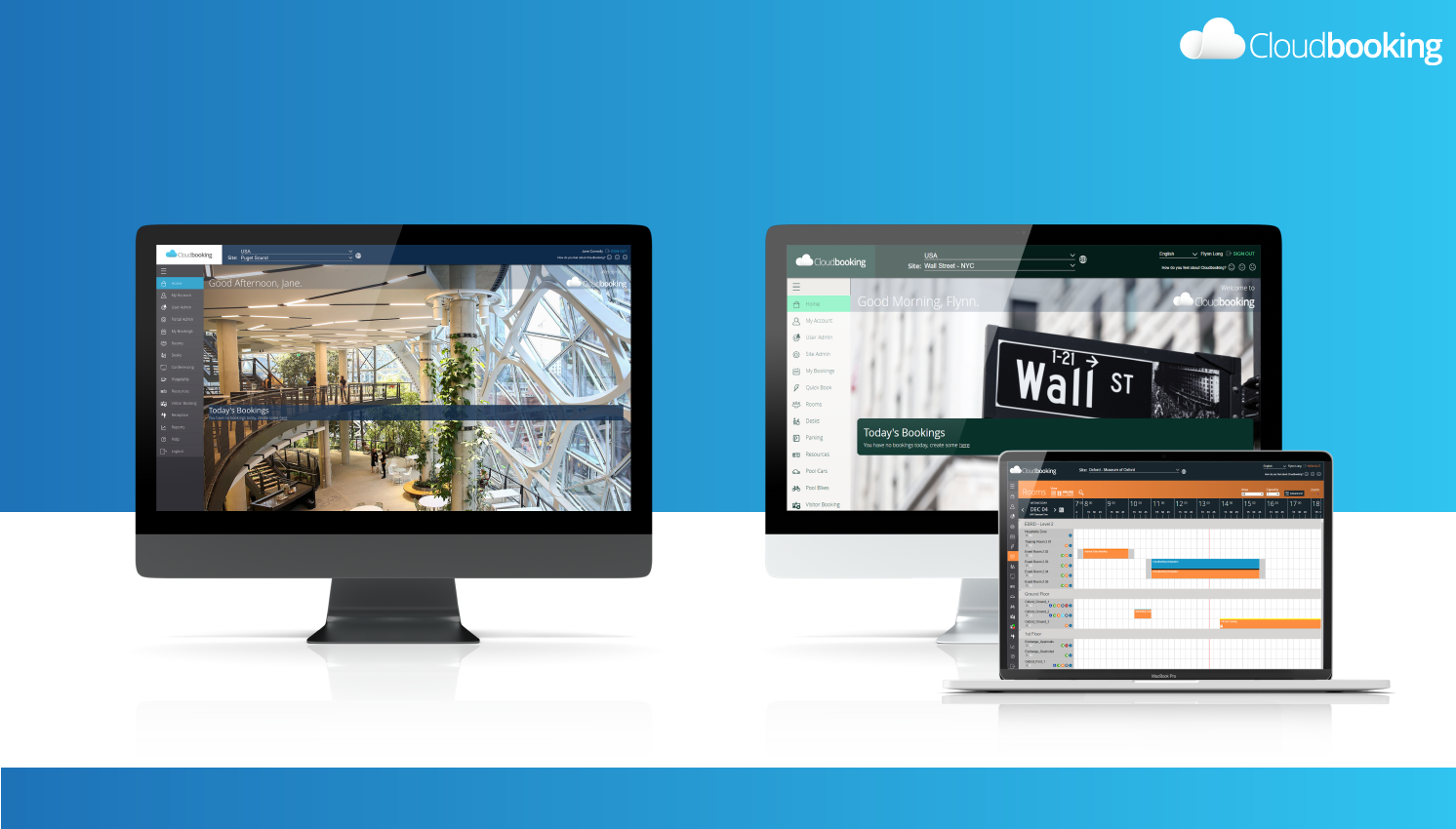
Training our future talent is critical to our businesses and the economy. However, in the wake of the global pandemic, the way we do this may look entirely different from how it did previously. An increasing number of organizations are looking to make homeworking a permanent fixture. This is welcomed by many employees who enjoyed the flexibility of working from home during lockdown.
Get a free demo
Enquire about a no-obligation demo today and get an exclusive hybrid working research paper — for free. Created in partnership with YouGov, this invaluable guide provides essential insights into developing your own effective hybrid strategy. Click below.
However, the younger generation has specific needs that differ from their older colleagues. The question is, can these be adequately met in a post-lockdown hybrid workplace? In this post, we explore apprenticeships, mentoring, and graduate programs in a post-pandemic workplace.
The rise of the post-lockdown hybrid workplace
The global pandemic has had an impact on the way we work in ways that were not anticipated. For many organizations, this is a genuine opportunity to create new and better working practices; for others, it has meant a change of direction or even closure as they struggle with dwindling resources.
One major shift in working practices, which many employees welcomed, was the sudden switch to remote working, which became necessary in many countries due to pandemic-related lockdowns. For businesses to continue operating, workers had to rapidly adapt to remote working, adopting new practices and technologies to facilitate this.
Working from home eliminated the need for the costly and often stressful commute to the office. It allowed people to be more flexible about their working hours and more casual in their dress code. Many people found it liberating, improving their work-life balance and affording them greater autonomy over their work.
A report by O2 found that just 10% of workers stated they would prefer to return to the office full time. Almost a third (32%) of people would like not to return to the office at all.
Working from home has not only been beneficial to employee engagement and retention, but it’s also cost-effective. An HR study by the University of California found that remote working can lead to a 50% reduction in costs for office space, furniture expenses, and utilities, among other things. As such, the shift benefitted both businesses and workers.
However, moving beyond pandemic style remote working is a challenge. Adapting to the post-lockdown hybrid workplace requires a new approach. Can workplaces make remote working viable for everyone?
Do younger generations need more face-to-face contact?
While many people have adapted well to remote working, others are desperate to return to the office and the pre-pandemic ‘normal’. These are often younger people – the Gen Z’s who miss the social side of work. These are the stars of the future, which are at a crucial point in their professional development.
O2’s study found that this age group is 20% less satisfied with their work-life balance than before the pandemic. The generation Z workforce is also more likely to rank socializing with colleagues as the most crucial factor for being productive at work. This presents an issue for employers in the post-lockdown hybrid workplace.
Will employee training look different in a post-lockdown world with a higher proportion of time likely being spent away from the office?
Both employees and businesses will have to adapt to new ways of training. The experience of apprentices and trainees will likely be significantly different in this new environment. The question is whether the quality of training programs can be maintained, or perhaps even improved, in a hybrid workplace?
One of the advantages of undertaking an apprenticeship has always been the invaluable learning opportunities that come from being in a physical workplace, learning from those who are qualified and experienced in the industry.
Although it is early days and the future remains uncertain, employers need to start thinking about adapting training programs, like graduate schemes and apprenticeships, to suit the new environment.
A shift to virtual learning is almost certainly inevitable. However, this must be done in a way that promotes engagement and prioritizes interaction amongst trainees.
To create a more social, group learning environment online, organizations should take a creative approach. A combination of digital tools such as augmented reality, gamification, and simulations can be used to foster interaction with peers. Also, they ensure high engagement from a tech-savvy generation.
Businesses and training providers must invest in technology to facilitate learning and keep young people engaged in the training process. Handheld devices and advanced digital tools and platforms can make home working and learning more accessible.
However, apprentices, trainees, and recent graduates will still require face-to-face learning in almost all sectors. As such, a blended approach is necessary to ensure the best outcomes for businesses and their workforce.
Is there a risk of a two-tier system, with those out of the office being overlooked?
A two-tier system with those out of the office being overlooked is a risk. Technologies and tools can be introduced to ensure that there are not any differences in how people engage or learn. Still, businesses and training providers need to consider this before introducing new technologies into their work process.
For example, apprenticeships often require close supervision from management and workplace mentors. Trainees need guidance and reassurance that they are doing things correctly. This could be difficult to replicate remotely, so employers must have robust systems in place to ensure the quality and frequency of support given to trainees does not diminish.
If remote workers are overlooked, they will become less engaged with their work, and productivity will suffer. This could create an environment where it is more likely for company policies and procedures to become obsolete or ignored. Companies must, therefore, adapt their policies to reflect the new working environment. Engaging workers in this process will help to get them on board and promote compliance.
Companies must ensure they have thoughtful and effective strategies and processes to ensure that remote workers are not overlooked, that they still feel part of the company, and are included at all levels and stages.
Managers will need to be trained in managing individuals and teams under the new conditions of blended working. It cannot be assumed that they will intuitively know how best to manage their teams under unfamiliar conditions. The proper training will ensure that they can do their jobs effectively, supporting and supervising staff in all locations and levels.
Do we lose something through purely virtual connectivity with weaker interpersonal relationships and even the loss of relationship-building skills?
There have long been concerns about virtual connectivity negatively affecting people by losing interpersonal skills gained through social interaction. In an increasingly digital workspace, these concerns are more relevant than ever.
Non-verbal forms of communication, such as body language and eye contact, are significant in interpersonal relationships. They are crucial to understanding others, forming emotional connections, and even influencing others. The benefits of non-verbal communication may well be reduced when using digital technologies more frequently.
It’s important to remember that these are skills that need to be developed. Where people have less need to use these skills, they may be weakened, which could present problems in other areas of life, outside the workplace when it comes to relationship building in our personal lives.
Ensuring workers have regular access to video conferencing while working remotely may go some way to resolving this issue. However, all those unplanned but often beneficial interactions that occur in a physical working environment will inevitably be reduced.
Interactions and relationship building in the conventional working environment occurred organically, for the most part. In contrast, everyone in the post-lockdown hybrid workplace will need to make a conscious effort to build and preserve relationships with others.
Technology can undoubtedly facilitate this, but the key will be in businesses taking action and implementing strategies to create a culture that promotes and encourages interpersonal skills and relationship building. This could be incorporated into staff training and embedded into company policies.
Companies need to remember that the younger generation – their apprentices and trainees – may have little or no previous work experience. While older employees will remember the pre-pandemic working environment, their younger counterparts may not. This means they may need additional training and guidance when developing and maintaining interpersonal skills and relationships in the workplace.
Young people need to learn these skills; they are the future talent and will shape how our businesses and economy operate one day. Employers must focus on their progression and soft skills development in addition to trade-specific skills building.
Conclusion
It may be too early to predict with certainty what the post-pandemic world will look like. However, one thing that looks set to remain is the post-lockdown hybrid workplace. Both employees and businesses have benefitted from the shift to remote and virtual working. Many are keen to adopt the new practices permanently. However, companies must rethink their approach to apprenticeships, graduate programs, and mentoring to ensure future stars are not left behind.
Seize the opportunities your organization has to improve its workspace technology in the new post lockdown hybrid workplace. Contact us now for a no-obligation product demo.


